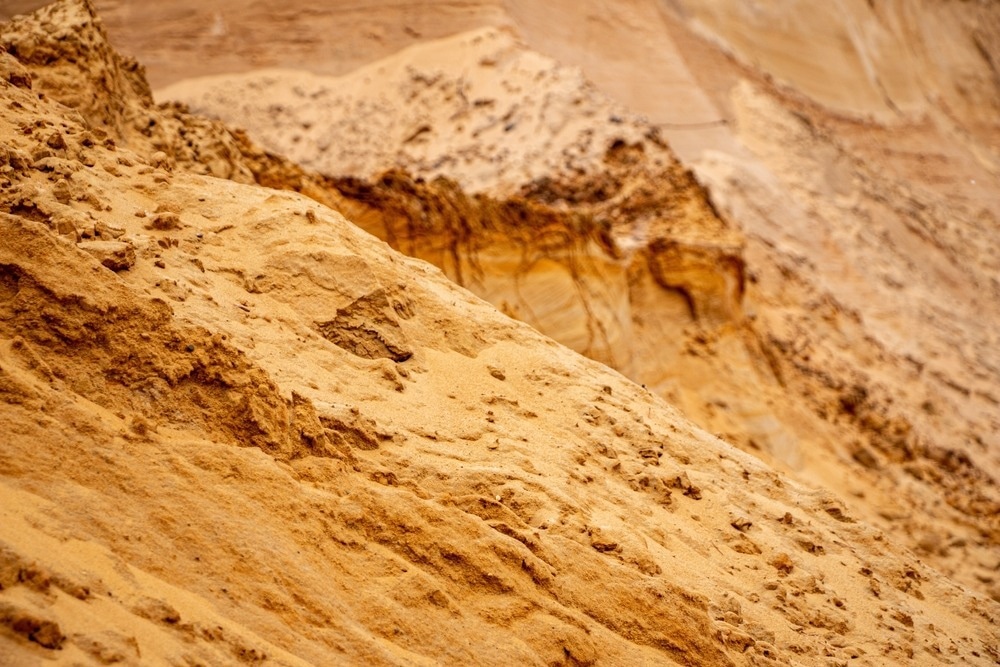Talmora Diamond Inc. has released an exploration update, sharing the outcomes of a recent sampling program conducted on the Seahorse Project. This project is a 50/50 joint venture between the Company and Olivut Resources Ltd.

Image Credit: ognennaja/Shutterstock.com
The Saskatchewan Research Council (SRC) has announced that a 323.35 kg sample of beach sand heavy mineral concentrate, taken close to the main Seahorse target, yielded 18 microdiamonds (<0.5 mm) when subjected to caustic fusion analysis. The sample of beach sand was taken from strandline material, which is normally fine-grained and naturally concentrated due to wave action.
The majority of the strandlines were generally less concentrated than they had been during the previous sampling. The majority of the material analyzed (more than 95%) had grain sizes smaller than 0.5 mm, which would reduce the likelihood of finding any macro diamonds (>0.5 mm).
To follow up on the previously reported macro and microdiamonds found in a small 1.8 kg sample collected from the same location, the mini bulk sample was taken. The two preceding diamonds were linked to two unaltered G-9 pyrope garnets, a picro-ilmenite, ilmenite alteration products frequently observed in kimberlites, a large quantity of low chrome spinel that is kimberlitic and possibly kimberlitic, and smaller quantities of low Mg high Mn ilmenite.
In the Juina region of Brazil and the surrounding areas of Venezuela, low chrome spinel and high Mn ilmenite are found as inclusions in low nitrogen to nitrogen free diamonds. It has recently been demonstrated that large diamonds are nitrogen-free.
Large diamonds may exist in the Seahorse area due to the presence of low chrome spinel and low Mg high Mn ilmenite, which have compositions similar to those found in low nitrogen to nitrogen free diamonds.
After being carried westward by paleo-streams and Cretaceous marine currents, Diamondex discovered 15 macro and near-macroscopic diamonds approximately 200 km to the west, while Darnley Bay discovered 3 macro diamonds 100 km to the north, carried by glaciers from the Seahorse region. It is very encouraging to find 19 microdiamonds and 1 macrodiamond in field samples at the junction of these two broad, regional vectors.
In the Slave geological province, diamonds found in field samples unrelated to known kimberlites typically have two pyropes and seven spinels, while diamonds associated with known kimberlites typically have 103 pyropes and 228 spinels. In addition to two pyropes, which are typically destroyed by weathering, each of the first two Seahorse diamonds had 202 kimberlitic and possibly kimberlitic spinels, which, based on the spinels, indicated the presence of a nearby kimberlite.
The clay found in four nearby drill holes contains high Mn ilmenite and kimberlitic spinel, which may be weathered kimberlite. Their presence with diamonds in the beach concentrates suggests that some of the clay in these holes may be kimberlitic.
The reverse circulation airblast (RAB) drill used in earlier drilling operations was inappropriate for the sticky clays that were encountered. Sample recovery was challenging, and contamination from marine clays above was unavoidable. It will be necessary to use a core drill to recover weathered kimberlite so that its diamond and rare earth element content can be assessed in order to test the main target and drill the previous targets again.
The Seahorse Project is thought to have the potential to host sizable diamondiferous kimberlite bodies, have mineral chemistry suggesting the possibility of large, valuable diamonds, and have elevated REE values in the deeply weathered surface zone that could be recovered as a byproduct.
On the Horton Project, in which the Company owns a 100% interest, many targets are drill ready.